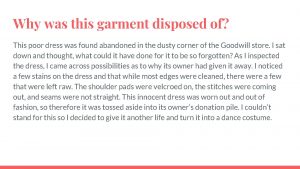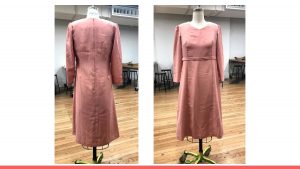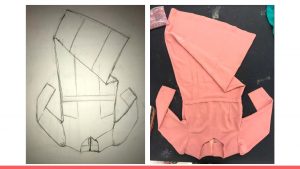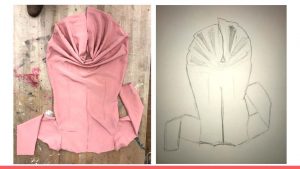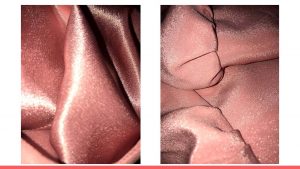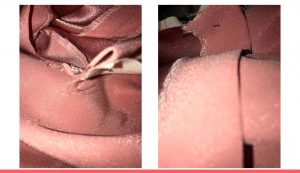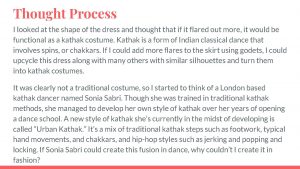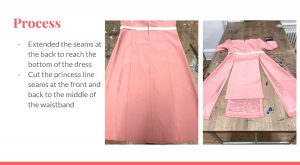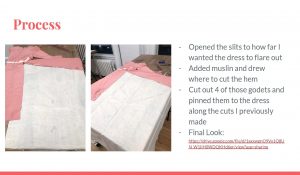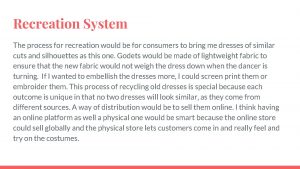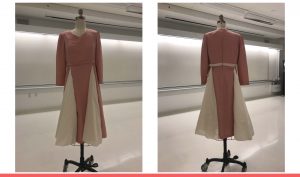Project Brief:
“Over the summer there was a performative installation by Vetements in the windows at Saks — a growing pile of old and discarded clothing — intended as a call to offset the excess in our lives. All of the garments were either donated by Saks employees or out-of-date merchandise that was destined to be given to RewearABLE, a program that provides sustainable employment for adults with developmental disabilities and that also recycles clothing. Each day, the pile was added to, casting a spotlight on excess and consumerism in fashion.
While it is likely that the journey of a piece of clothing will end at the landfill, a portion of clothing purchases are often recycled mainly in three ways: clothing may be resold by the primary consumer to other consumers at a lower price, it may be exported in bulk for sale in developing countries, or it may be chemically or mechanically recycled into raw material for the manufacture of other apparel and non-apparel products.
The U.S. government offers tax incentives for citizens who donate household goods to charities such as the Salvation Army and Goodwill Industries, which salvage a portion of clothing and textiles that would otherwise go to landfills or incinerators. Only about one-fifth of the clothing donated to charities is directly used or sold in their thrift shops. So charities find another way to fund their programs using the clothing and other textiles that can’t be sold at their thrift shops: they sell it to textile recyclers at 5–7 cents per pound. About 45% of these textiles continue their life as clothing, just not domestically. Certain brands and rare collectible items are imported by Japan, the largest buyer in terms of dollars of vintage or American high- end fashion. Clothing that is not considered vintage or high-end is baled for export to developing nations. Imported apparel from America and Europe is bought in 100 pound bales of mixed clothing by small entrepreneurs. Like opening a piñata, these merchants sort through the contents of the bales to see whether their investment has paid off.
There are detractors to this view, however. For example, the Institute for Manufacturing at Cambridge University issued a report in 2006 titled Well Dressed? The Present and Future Sustainability of Clothing and Textiles in the United Kingdom, in which it raised concerns that trade in secondhand clothes in African countries inhibits development of local industries even as it creates employment in these countries. And the authors of Recycling of Low Grade Clothing Waste warn that in the long run, as prices and quality of new clothing continue to decline, so too will the demand for used clothing diminish. This is because in the world of fast fashion, new clothing could be bought almost as inexpensively as used clothing.
Design Brief:
Because waste is random and unpredictable, you will be working with swapped thrift shop finds (garments or objects) for the “Reincarnation Project”.
Based on the workings of the brain, most living creatures “see” what they expect to see based on the “statistics of their experience”. In order to move into a space of uncertainty conducive to innovation, you must begin to see your thrift store finds in a less subjective way. To do so, please follow the steps below in the order listed:
1. Write a paragraph speculating on why the disposal of the individual garments/objects came about (e.g., owing to poor fit, wear and tear, stains, outdated style, inappropriate garment care, unsuitability to lifestyle, moth holes or damage that rendered the garment/object useless).
2. Lay the garments or objects out flat upside down and do pencil sketches/an extensive still life study of front and back views also upside down.
3. Combine and manipulate garment or object for collage/photographic compositions (examples follow below).
4. Upcycle your thrift shop find. You can change its original use entirely, deconstruct, reconstruct, amend with additional fabric, embellish, boil, shred, over dye, felt, screen print or…? Be sure to document all processes and iterations with photography and/or video.
5. Create a system for making more than one. Would you have consumers or manufacturers bring you similar useless or unwanted garments and offer them a service rather than a product? Would you look for dead stock of like garments (in other words scale up what you just did)? Would you use the reincarnation as a prototype and then reproduce entirely with new materials? Be specific about these material choices, garment care, means of manufacture (include techpack), scale of production, method of distribution.
6. In the future when designing a product for its first life, how would the possibility of a future “reincarnation” alter your initial design concept?
7. Create a visual stream (still image or video) that conveys the changing context for the 1st and 2nd life of your thrift shop finds.”

